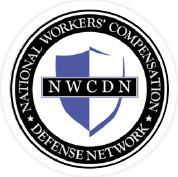DOJ Takes Steps To Bolster Civil Enforcement For Workplace Violations
| The Justice Department (DOJ) is taking a series of steps to bolster its civil enforcement efforts against workplace violations under federal environmental laws, adding to its high-priority effort to step up criminal enforcement against workplace safety violations under the pollution control statutes.
“We are strengthening our efforts to pursue civil cases that involve worker safety violations under the Clean Air, Clean Water, Resource Conservation and Recovery and Toxic Substances Control Acts,” John Cruden, DOJ’s top environmental official, told a March 16 event in Washington, DC. Cruden, assistant attorney general for the environment and natural resources division (ENRD), said these statutes contain “a number of provisions that establish safety measures for chemical handling, toxic releases, or catastrophe prevention; violations of these statutes often have a direct impact on workers tasked with handling dangerous chemicals or cleaning up spills.” Cruden outlined four specific steps the department is taking to strengthen its civil enforcement efforts against workplace safety violations, including: working with OSHA to ensure settlements and any injunctive relief address violations of the environmental laws, and protects workers; cross-training between OSHA and other relevant regulatory agencies so each understands the others’ authorities, processes and resources; better information sharing, which has already accelerated case development and helped to identify additional industries and activities for enforcement; and ensuring that each case referral is reviewed for potential workplace safety violations and investigated and developed. He said the civil enforcement effort has already “produced results,” adding that “there are several pending civil cases with worker safety components. The ENRD’s efforts to address civil violations is part of a broader administration effort, announced late last year, to step up criminal enforcement for workplace safety under the environmental laws. Among other things, Deputy Attorney General Sally Yates issued a memo giving formal responsibility for criminal workplace safety violations to ENRD, along with the various U.S. Attorneys’ offices. In addition, Yates also signed a memorandum of understanding between DOJ and the Department of Labor that outlines how criminal referrals will be coordinated and tracked, how information and data will be shared and how training for both prosecutors and investigators will be developed and disseminated, Cruden said. He said such efforts are needed both because of historical under-enforcement of workplace safety violations and because workplace safety laws provide “woefully inadequate” penalties compared to the injury caused by violations. “As a result, many in industry often treat Occupational Safety and Health (OSH) Act penalties as a cost of doing business and not a deterrent to non-compliance with the laws,” he said. For example, the OSH Act criminalizes only three types of violations and even then violations are only misdemeanors, he said. By contrast, violations of the three major environmental statutes — Clean Air Act, Clean Water Act and the Resource Conservation and Recovery Act — can result in a host of felonies that result in significant jail time and millions of dollars in penalties. “The use of the endangerment provisions of these statutes has enabled the United States to prosecute criminal conduct that might go unaddressed under the worker safety laws, such as conduct that did not result in the death of an employee,” Cruden said. Cruden said the stepped up enforcement of workplace safety violations is “priority at the highest levels” at both DOJ and the Labor Department. |

